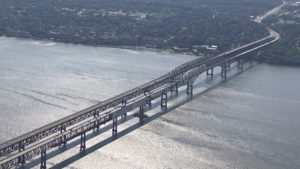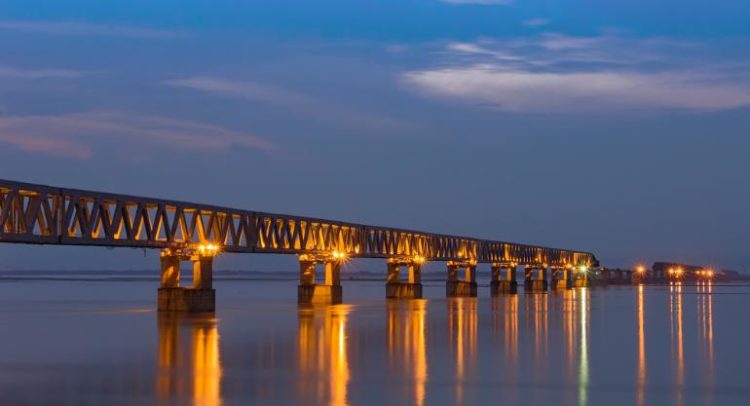Assam’s Bogibeel Bridge – India’s longest rail-cum-road bridge, is all set to serve the North-eastern people after a span of 21 years. First of its kind in India, being a double storied bridge, it is also acknowledged as Asia’s second-longest bridge with three-lane roads on top and a double line rail below. Prime Minister Narendra Modi is going to inaugurate it tomorrow on 25th of December.

The proposed project was approved by the then Prime Minister HD Deve Gowda on January 22, 1997, who laid the foundation stone for the bridge as well. Its construction work initiated on April 21, 2002 during the tenure of former PM Atal Bihari Vajpayee and now to open to public on 25th December,the day happens to be the 94th birth anniversary of Vajpayee, who passed away in August this year.
With contentment, former Assam chief minister Prafulla Kumar Mahanta, said “It has been a long standing demand of the people of the region and I feel glad that it has become a reality now.”
The 4.9km-long bridge, surpassing several protests and missed deadlines is now ready to be of used. The bridge will be a boon for the Northeastern region of India by facilitating the banks of the mighty Brahmaputra River with better connectivity and there by encouraging the economy of the region and bolstering the defence movement along the India-China frontiers. Further the bridge will cut down the commute duration from around 90 minutes via water to less than 20 minutes by road.
The bridge which was constructed at an estimated cost of Rs 5,900 crore, has a “serviceable period of around 120 years. The bridge reduces the travel time from Assam to Arunachal Pradesh to four hours and will cut out the detour of over 170 km via Tinsukia.
The Bogibeel Bridge was granted a national project status in 2007. Its delayed construction work resulted in a massive cost escalation of about Rs 1,700 crore and ended up at costing more than Rs 5,000 crore.
However, the bridge couldn’t bring smile for hundreds of boatmen, who have been earning their livelihood by ferrying passengers and goods across Brahmaputra River over the years as the bridge is likely to hit their livelihood. Approximately, 28 boats, including two government ferries, were plying between the two banks every day. So the boatmen, small retailers along with wage-earners are apprehensive for their future now.

